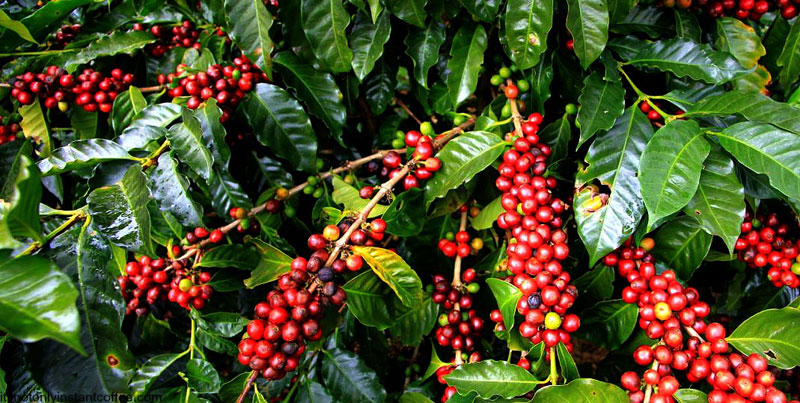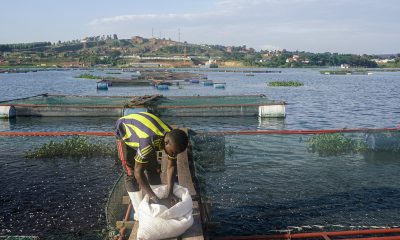Analysis
2018 a year of Economic revival?
There is reason to be optimistic that 2018 may turn out to be a year of economic revival and that most people in Uganda could experience an uplift in their standards of living or an easing in economic hardships.
The sense of optimism is rooted in the recent season forecast by the Uganda National Meteorological Authority (UNMA) that shows that most parts of the country will experience above average rainfall. And if that happens, farmers are likely to record better harvests early next year that will likely oil the engines of the economy out of the current economic jam.
In its recent economic forecast, the Bank of Uganda projects that the economy is likely to grow above 5 percent next year.
Relief from hunger
The current rains have followed yet another relatively good season that saw slight recovery and easing of the food security situation that was experienced in 2016. It may be recalled that 2016 was a devastating year for farmers, businesses and the entire Ugandan economy generally because of a year-long drought.
Non farmers were not spared as food prices skyrocketed almost throughout the year as double digit food prices (read food crop inflation) eroding savings of many middle income earners.
The drought led to starvation and famine in many parts of the country forcing the government to abandon development projects and diverted funds towards humanitarian purposes like distributing food aid to famine-stricken populations in Teso, Karamoja, Isingiro and Bukomansimbi. Inadequate resources forced the government to target only the vulnerable groups such as the elderly, children and pregnant mothers.
In March 2017, the National Food Security Assessment Report released a warning that 11 million Ugandans were suffering from acute food insecurity because of poor harvest in the previous season.
The extent of the impact of the drought is seen from the way the government has had to cool its ambitious middle-income economic goals earlier set for 2020 now pushed for 2025.
The head of the government’s service delivery unit and former minister Dr. Ezra Suruma revealed last week that the 20m (60kg) bags of coffee target will not be attained.
“Our target is 20 million bags with an income of USD 2 billion by 2020 but this won’t be possible. Gladly the President has also been flexible enough to adjust to 2025,” Suruma added: “We don’t have the necessary conditions for producing that much. We still lack adequate land acreage for this coffee, productivity in terms of how many trees is low, we lack inputs and financing for larger farmers also remains a challenge,” he added.
Suruma said that Uganda requires upwards of USD1 billion (Ushs3.6 trillion) in additional financing for coffee development to help acquire the necessary machinery, land and labour.
Coffee boost
Just when the government was planning to increase by five fold the amount of coffee exported from 4 million bags to 20m bags by the year 2020, the invisible hand of God made these plans record a false start.
The prolonged drought ensured that 60 percent of all the coffee seedlings the government distributed to farmers went to waste or was scotched in the field. Other shortcomings such as poor timing of distribution of planting materials coupled with distributing too young plantlets were registered.
The coffee and fruit seedlings that survived the drought, the forthcoming season will be a boon as it will provide momentum to the young plants. However, the government could also take advantage of the favourable rains to help farmers fill in the gaps where they dried so as to meet its target of achieving middle-income status.
This not withstanding, the production of cereals such as maize, beans, millet and ground nuts as well as other staple food crops like Matooke, Cassava is looking up, if rains come as projected.
There are caveats to this sense of optimism. Uganda’s rapidly expanding population means that plentiful supply of food as the case was a few years ago, is a thing of the past.
Uganda’s rapidly expanding population coupled with the recent influx of refugees, and growing regional markets, has created demand for food. This is further helped by improvements in Uganda’s roads that have opened the country to many buyers from the region.
This means that those that engage in food production have a greater incentive in redoubling their efforts.
The use of fertilizers, especially towards the end of the season to avoid leaching, and use of improved planting materials would be one of the ways to boost productivity (greater yields per unit area of land).
Building storage facilities well ahead of the January to February harvest season is as important as planning for higher yields. Studies have shown that nearly a half of the food we produce in Uganda goes to waste because of poor post-harvest handling.
Improvements in storage technologies means that farmers no longer have to panic to sell their produce.
Encouraging the digging of drainage channels in gardens and farms to trap water and stop loss of top fertile soils through erosion, would be another worthy recommendation to farmers. In order to ensure greater sustainability of our agriculture and livelihoods, everyone should realise the importance and actually take action and plant trees.
Trees are considered an important adaptation mechanism in the era of climate change as they not only help to minimize the adverse effects of of harsh weather conditions, but can also be a source of income during hard times. Trees are also another way of minimizing the impact of the next drought.
This warning becomes even more pertinent when one considers scientific studies showing that globally, extreme weather conditions have nearly tripled in the last decade.
A study titled: Increase of extreme events in a warming world published by the pnas.org concluded that climatic warming has increased by about 1.4 times over the past decade compared to the previous decade.
Comments


























